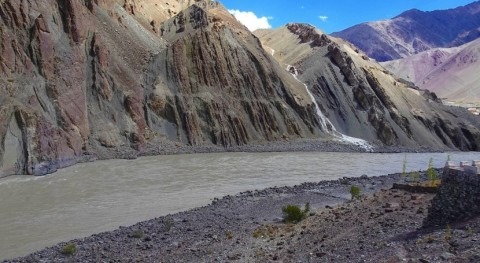The government of New Zealand – Aotearoa, its current Māori name – is in the middle of a major overhaul of water services in the country.
It all started with an extensive government review of water services prompted by an outbreak of waterborne disease in Havelock North in 2016, where thousands of people became ill from contaminated drinking water. The review exposed the need for reform to make system upgrades affordable.
Local government councils – 67 in the country – are in charge of providing water services for the majority (85%) of New Zealanders: they own and operate infrastructure either directly or through public companies known as Council Controlled Organisations. Other smaller private and community-based suppliers supply drinking water to small and rural populations.
The estimated investment needed to maintain and upgrade water infrastructure to be able to meet drinking water and environmental standards is $120 billion to $185 billion over the next 30-40 years, more than most communities can afford, and so the government proposes to address it by changing the way three waters services – drinking water, wastewater and stormwater – are managed.
Under the proposed scheme, water services delivery would be aggregated under four new publicly-owned multi-regional entities, who will own and operate three waters infrastructure on behalf of local authorities. This would include transferring ownership for water assets. One of the benefits of scale is the new entities would have access to borrowing from capital markets.
The new entities will be owned by local authorities, and mana whenua – Māori indigenous people – will have a joint oversight role. But councils will not be shareholders; instead, “ownership” entails they will be part of a Regional Representative Group together with mana whenua representatives; this group will appoint members to an Independent Selection Panel, which in turn will appoint the members of the Entity Board governing the entity, a complex three tier process. The government has made clear that water services will continue to be under public ownership and the reform also includes a series of protections against future privatisation.
In parallel, a new water services regulator was established as a Crown entity in March 2021, Taumata Arowai. It will replace the Ministry of Health in this role when the Water Services Act is passed, which is expected to be in the second half of 2021. It will oversee the drinking water sector, with some oversight as well over wastewater and stormwater.
In 2020, the government committed $761 million in funding to the reform programme, and a further $291 million in the 2021 budget. Last July the government announced a $2.5 billion package to support the local governments with the transition.
At the moment councils are voluntarily deciding whether to join in the reforms, and some have voiced concerns about turning over infrastructure worth billions to new entities. While the government argues that without changes to the way water services are delivered, water bills will become unaffordable or their quality will decline over the coming decades, the opposition National party says “they will result in low accountability, bloated services entity, more bureaucracy, and messy cross-subsidising between neighbouring regions”, while their scale benefits and cost-savings are unconvincing.


















